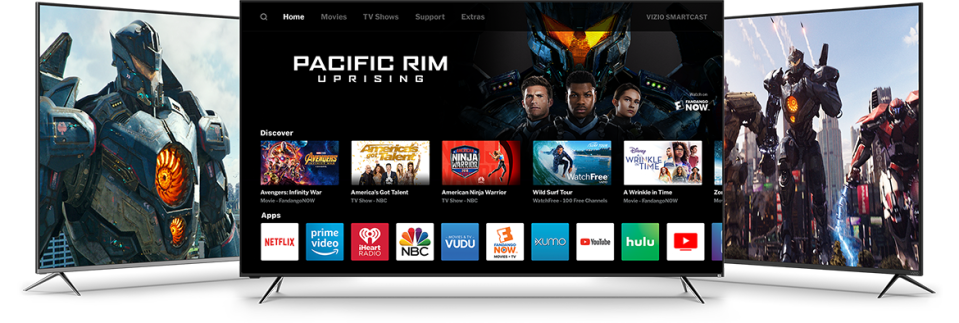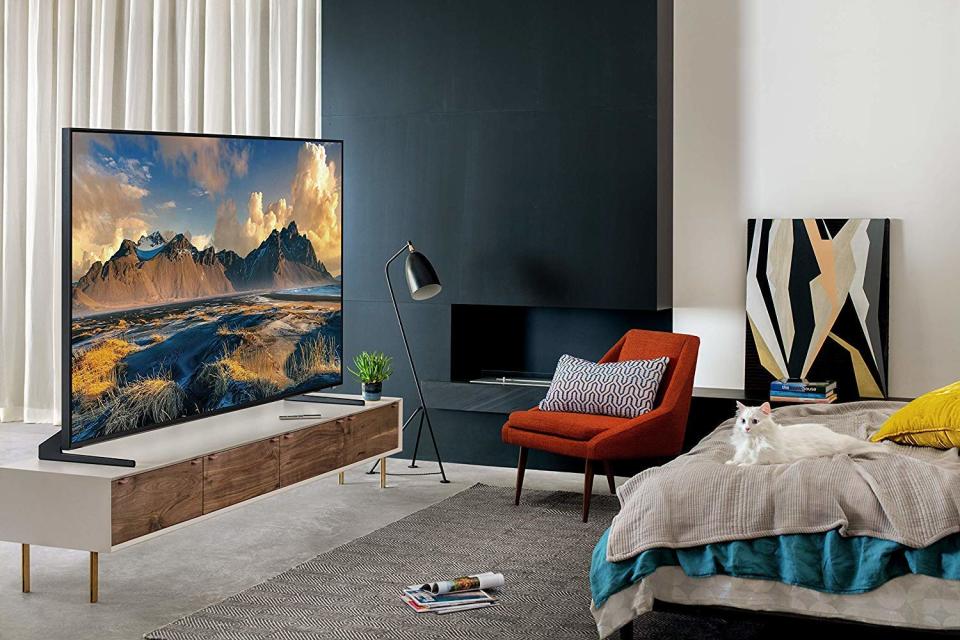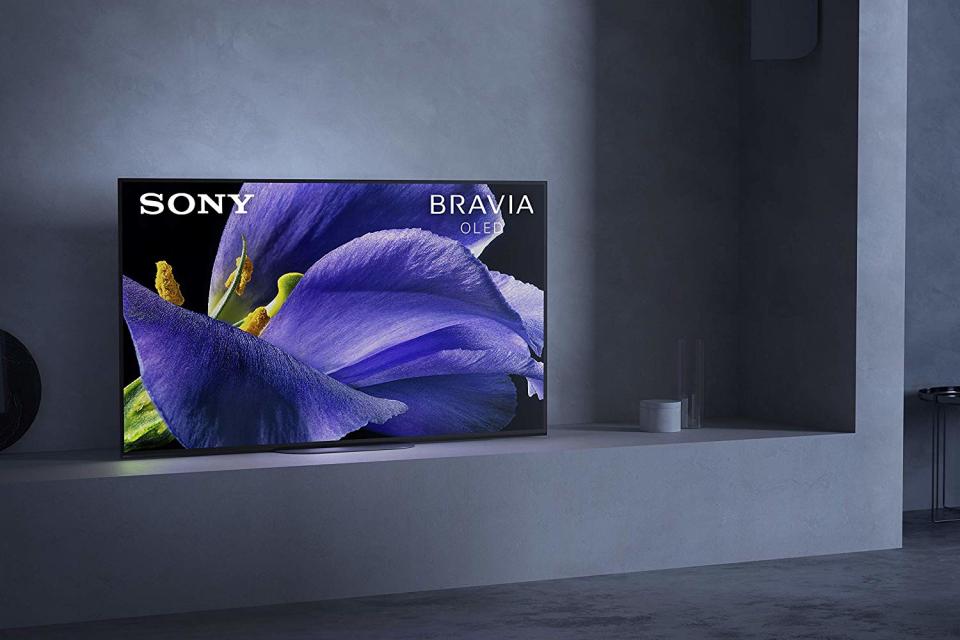Prep for Black Friday sales: 3 easy steps to picking the perfect TV for your space
Yahoo Lifestyle is committed to finding you the best products at the best prices. We may receive a share from purchases made via links on this page. Pricing and availability is subject to change.

Too much choice can be paralyzing. And nowhere is that more evident than when beginning to shop for a TV. OMG, the options! How do you determine the ideal size? What about resolution? Should the TV sit on a stand or be wall-mounted? Should the screen have a frame or be edgeless?
It’s enough to make you throw in the towel and make do with what you’ve got. Don’t. We’re winding up to the biggest appliance sales of the year, and it’s the perfect time to get the TV of your dreams. All it takes is a little advance thinking, and you can get your specs down on paper. Then, when that Black Friday bell sounds, you’re ready to storm the doors.
Here are three steps to determining exactly what you’re looking for in a TV.
1. Calculate the right size TV for your room
There are a number of different formulas for determining ideal TV size. Most land in approximately the same place, so why not stick with a simple calculus: Identify the spot from which you like to watch TV (let’s say your best seat on the couch). Measure the distance to the TV screen in inches. Divide that measurement by 2. This number—in inches—is a good guideline for the size of a TV.
For example, if your couch is ten feet, or 120 inches, from the TV spot, 60 inches is your sweet spot for a TV size. Because 60 is not a standard size for TVs, you’d go with a 65-inch or a 55-inch depending on other factors.
What other factors? How much of a presence do you want your TV to have in the room? How’s your budget? Is there ample space on your wall? How important is TV watching to you (um, to us, very important). We know you already know this, but it’s worth mentioning that TV dimensions are the diagonal distance from one corner of the screen to the other—say upper right to lower left. There are even suggested maximum sizes for TVs, for safe viewing distances.
Here’s an online calculator where you can play around with different size options and learn the subtleties.
2. Consider resolution
The smaller the TV, the smaller the pixels and clearer the image. So if you’re shopping for a smaller space—den, kitchen, studio apartment—and you’ve determined that you need a TV smaller than 49 inches, you’ll be fine with a regular HD (high-definition) TV—that is, a horizontal screen resolution of about 1,920 pixels.
If your needs are for a larger TV—50 inches or more—you’ll want to look at 4K Ultra HD options; 4K TVs have a horizontal resolution of 4,000 pixels, and you’ll really notice a difference in picture quality at 50-plus inches. For more about shopping for a 4K TV, see our comprehensive 4K buying guide.
If you’re going really big—80 inches or more—consider an 8K TV like Samsung’s Flat Screen 82-Inch QLED 8K Q900 Series Ultra HD Smart TV (QN82Q900RBFXZA). TVs with an 8K resolution have four times the picture clarity of 4K. At these dimensions, you’ll need that.
3. Think about placement
If you’re planning to mount your new TV to the wall, make sure the options you’re considering are hangable. Not all flat or curved TVs can hang on walls. They’re designed to be positioned on stands, which are included. Remember that a TV’s stand will add size to its overall impact, so be sure to include the size of total—especially if you’re working with a tight space.
Some TV stands, like the VIZIO 65-inch Class E-Series 4K Ultra HD HDR Smart LED TV (E65-F1) are narrow and add only about six inches to the overall profile of the TV, while other are beefy—for example, the Sony 65-inch Master Series BRAVIA OLED 4K Ultra HD Smart TV (XBR-65A9G); this can add up to 12 to 14 inches.
And don’t ignore looks, in general, if you tend to care about details. The frame of your TV screen is something you’re going to be staring at a lot. Do you have a strong preference for matte black or brushed metal? Do you not care? Do you love the look of an edgeless screen? The more you think about and work out in advance, the better off you are when buying time arrives.
Happy viewing!
Read More from Yahoo Lifestyle:
Follow us on Instagram, Facebook, Twitter, and Pinterest for nonstop inspiration delivered fresh to your feed, every day.
Want daily pop culture news delivered to your inbox? Sign up here for Yahoo’s newsletter.




